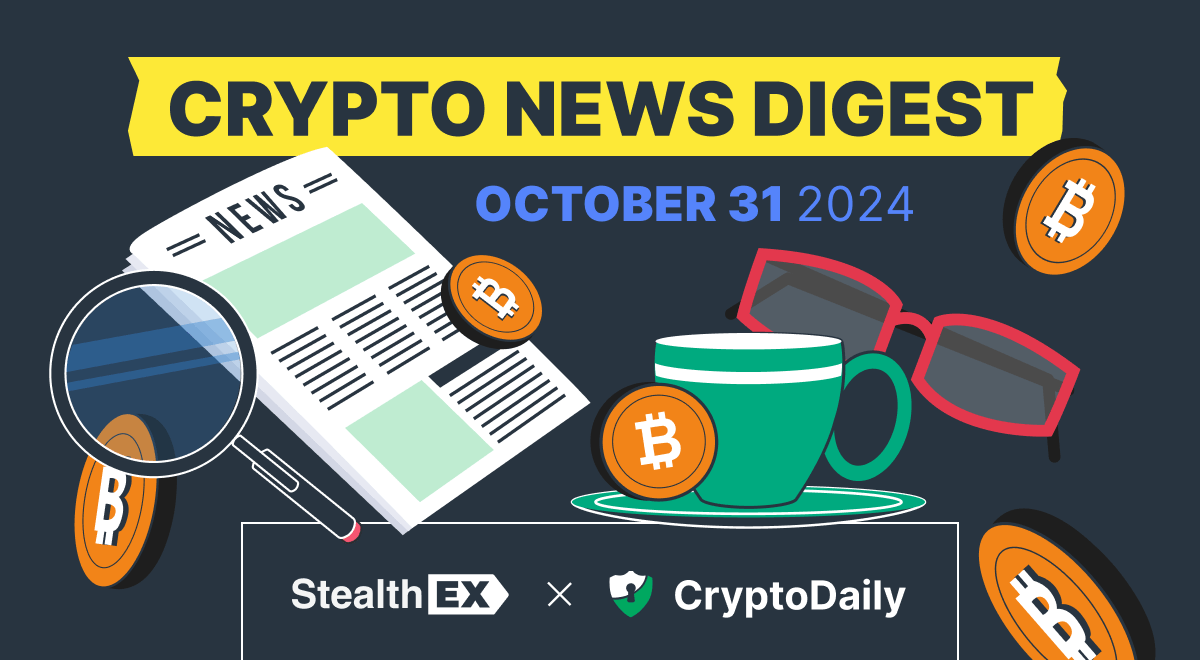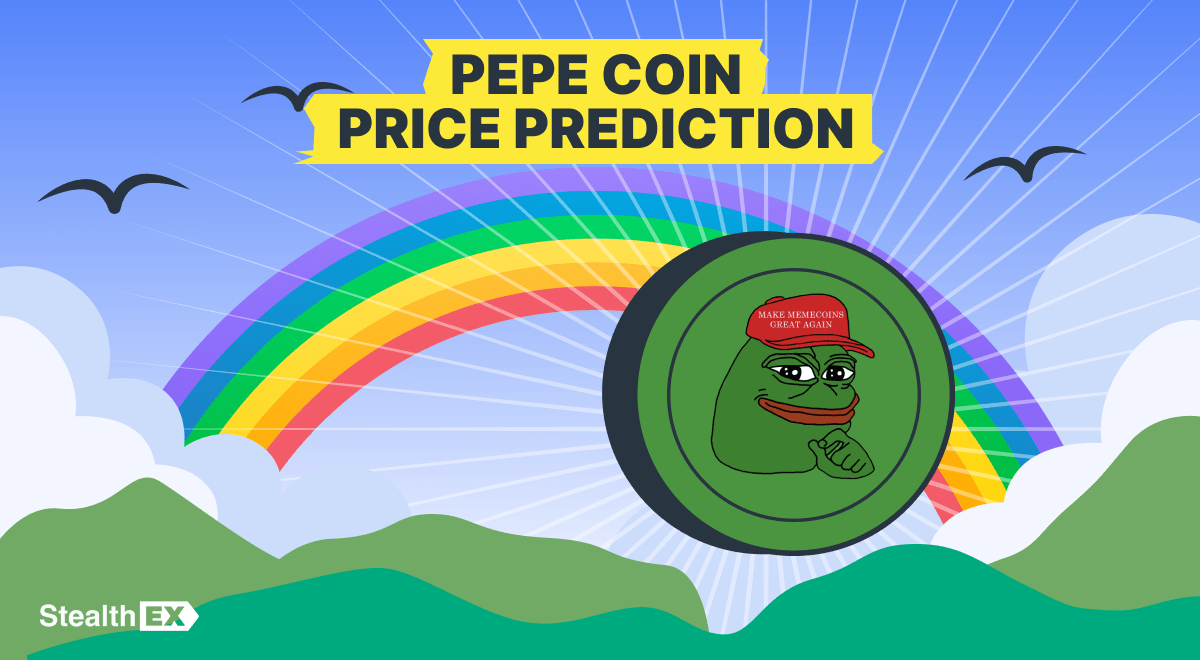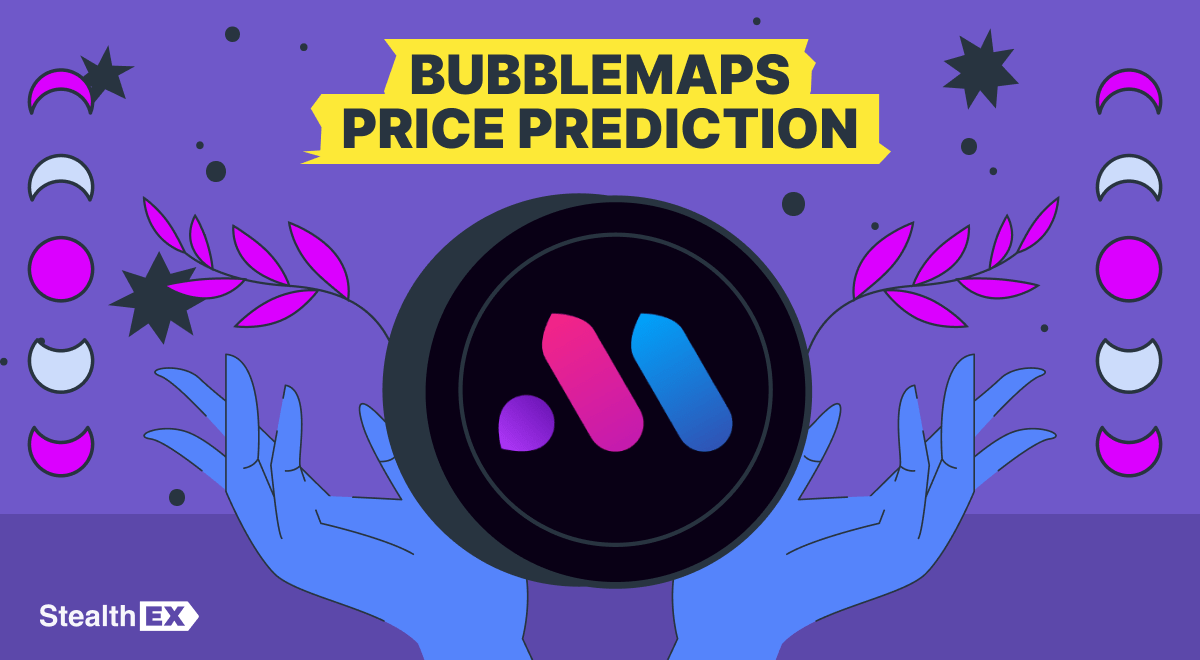Top Crypto News: Aark’s $225K Bounty, QuickSwap on ETH, $MOODENG Meme Coin

Keep up with the latest news from StealthEX and CryptoDaily! Every week, we cover the top stories shaking up the crypto world. Curious about what’s happening right now? Our quick recap has you covered with all the essentials in one place. Stay ahead of trends and big events driving the market.

Article contents
- 1 Aark Digital Offers 225,000 USDC Bounty to Recover Stolen Crypto
- 2 QuickSwap Expands to Ethereum Layer 1 with Gasless Trades and Liquidity Hub
- 3 Meme Coin MOODENG Surges After Binance Futures Listing, Whale Cashes Out $140k Profit
- 4 Bitcoin Dominance Climbs to 59%
- 5 BRICS Nations Explore Bitcoin for Trade Payments to Bypass Sanctions
- 6 Denmark Proposes Taxing Unrealized Crypto Gains with New Framework Starting 2026
- 7 North Korea’s Lazarus Group Exploits Chrome Zero-Day toSteal Crypto Wallet Credentials
Aark Digital Offers 225,000 USDC Bounty to Recover Stolen Crypto
Aark Digital has reported a significant security breach, where hackers stole 1,386,085 USDC and 24.143 ETH. The team immediately responded by launching non-stop recovery efforts and upgrading security protocols to prevent any further damage.
To recover the stolen funds, Aark Digital is offering a 15% bounty. The person responsible can claim 225,000 USDC if all the assets are safely returned. More details about the reward are available through Arkham’s bounty platform. The deadline for the return is set for October 26, 2024, at 15:00 UTC. If the assets are not recovered by then, Aark Digital will consider legal action.
In case the full amount isn’t returned, Aark Digital will introduce a plan to manage the losses. They have promised to keep users informed every step of the way, ensuring transparency during this critical period.
QuickSwap Expands to Ethereum Layer 1 with Gasless Trades and Liquidity Hub
QuickSwap has launched two major platforms on Ethereum’s mainnet, targeting DeFi users who prioritize security and stability. Known for its strong presence on Polygon, QuickSwap is now entering Ethereum Layer 1 to attract a wider audience. This move aims to capture the attention of Ethereum veterans and strengthen the platform’s position in the DeFi space.
One key feature is QuickPerps Falkor, a perpetual exchange designed for high-speed trading. It offers users advanced tools like instant transactions, trailing stops, and up to 50x leverage on a variety of cryptocurrencies. A standout innovation is the option for gasless trades, helping traders avoid high fees and increase their profitability.
QuickSwap is also introducing its Liquidity Hub, powered by Orbs Network. This hub aggregates liquidity from multiple sources, reducing slippage and offering better prices for traders. Liquidity fragmentation, a major challenge in DeFi, is addressed by this solution, making trades smoother and more efficient.
Both QuickPerps Falkor and the Liquidity Hub focus on enhancing the user experience on Ethereum Layer 1. With gasless transactions and deeper liquidity pools, QuickSwap is making DeFi more accessible and affordable for traders.
Choose StealthEX for Exchange and Buy Crypto.
- User-Friendly — Simple and minimalistic interface for everyone.
- Fast and Private — Instant non-custodial cryptocurrency exchanges.
- Buy crypto with Credit Card.
- 1500+ coins and tokens are available for limitless, quick and easy exchanges.
- NO-KYC crypto exchanges — Buy cryptocurrency up to $700 without KYC!
- StealthEX crypto exchange app — Process crypto swaps at the best rates wherever you are.
- 24/7 Customer Support.
Earn from Each Exchange by Joining StealthEX Affiliate Program.
Become a partner right now and use affiliate tools:
- Public API — Earn from your wallet, aggregator, or exchange terminal.
- Referral Links — Recommend StealthEX to your audience.
- Exchange Widget — Built crypto exchange widget on any page of your website.
- Button — A perfect choice for traffic monetization.
- Banner — Track conversion and stats right in the personal cabinet.
Meme Coin MOODENG Surges After Binance Futures Listing, Whale Cashes Out $140k Profit
Smart investors are once again reaping big rewards from meme coins, with Moo Deng being the latest hit. As the hype around Goatseus Maximus started to cool, Solana-based meme coin Moo Deng saw its price skyrocket shortly after its listing on Binance Futures. The coin’s value doubled within minutes, creating a stir in the market.
On October 25, 2024, Binance Futures launched the USDⓈ-Margined $MOODENG Perpetual Contract at 10:00 UTC. A sharp-eyed crypto whale seized the moment and made $140k in profits in just 20 minutes. According to data from Lookonchain, the whale quickly swapped 1,300 SOL for 2.77 million $MOODENG as soon as the listing went live. Twenty minutes later, he sold his holdings for 2,109 SOL, locking in a hefty gain.
This wasn’t the first time the investor profited from new meme coins on Binance. He had also earned $17k earlier in the week from Binance’s GOAT listing. While some speculate that his precise trades may indicate insider knowledge, there is no hard evidence to back these claims.
Bitcoin Dominance Climbs to 59%
Bitcoin’s dominance in the crypto market has been steadily rising since early September 2022, when it bottomed at just under 39%. Now sitting at 59.5%, analysts suggest that Bitcoin could soon lose some ground to altcoins.
Throughout the current bull run, Bitcoin has maintained its position as the leader, overshadowing most altcoins. Whenever an altcoin season seemed imminent, Bitcoin regained control, pushing its dominance higher. Now, with Bitcoin trading above a bull flag, it remains the frontrunner. However, standout altcoins like Solana (SOL) may challenge its position in the near future.
The 60% dominance level could become a key point for Bitcoin. Currently, Bitcoin’s dominance is climbing within an ascending wedge pattern. If it continues this trend, the dominance level could touch 60% before either breaking through or reversing. This resistance level may signal a shift in market dynamics.
Meanwhile, the Total3 chart, which tracks the market cap of all cryptocurrencies excluding Bitcoin and Ethereum, shows signs of nearing a breakout above the $637 billion mark. If this breakout happens, it could spark an altcoin rally, potentially eating into Bitcoin’s dominance.
BRICS Nations Explore Bitcoin for Trade Payments to Bypass Sanctions
The BRICS nations are considering using Bitcoin and other cryptocurrencies for settling import payments. During the recent BRICS Summit, leaders discussed how adopting crypto could help reduce reliance on the US dollar and offer a way to counter international sanctions.
While many expected a concrete plan for a new reserve currency, the summit primarily focused on increasing trade in local currencies. Though the US dollar remains dominant in global trade, BRICS countries recognize the need for alternatives when sanctions limit their access to the dollar.
Russia has been the most vocal advocate for using Bitcoin in trade. Russian leaders suggested that local miners could sell Bitcoin to buyers, who would then use it to pay for imports. This approach could allow the country to work around sanctions and continue international trade. To support this initiative, Russia has launched two domestic exchanges where users can swap fiat currencies for crypto. Additionally, the government is promoting Bitcoin mining to ensure a stable supply for these transactions.
The BRICS nations collectively represent a large portion of the world’s population and GDP. With 30 countries currently seeking membership, the group’s shift toward crypto payments could challenge the dollar’s global dominance. Bitcoin’s role in this process may grow, positioning it as a viable tool for international trade.
Denmark Proposes Taxing Unrealized Crypto Gains with New Framework Starting 2026
Denmark is advancing toward a new tax framework that could impose taxes on unrealized cryptocurrency gains by 2026. The Danish Tax Law Council has recommended adopting a mark-to-market taxation model, which would tax the changing value of crypto assets—even if they remain unsold.
This proposal aims to address what the Council sees as an imbalance in the current tax system. Under the mark-to-market model, any gains or losses in a crypto asset’s value would be treated as capital income. Investors would be taxed annually based on the value of their holdings, whether or not the assets are sold.
The Council’s 93-page report outlines three potential taxation models: capital gains tax, warehouse taxation, and inventory taxation. The preferred option is inventory taxation, where an investor’s entire crypto portfolio is treated as one “inventory,” and annual changes in its value are taxed accordingly.
Crypto analyst Mads Eberhardt from Steno Research expressed strong concerns about the proposal. In a post on X (formerly Twitter), Eberhardt noted that the new rules could apply retroactively, impacting crypto holdings dating back to Bitcoin’s launch in 2009. “This is a war on crypto,” he remarked.
Danish Tax Minister Rasmus Stoklund acknowledged that the current tax system creates challenges for crypto investors. He emphasized that the new framework aims to simplify and standardize taxation for digital assets, though the recommendations are still subject to legislative review.
The Council’s report also recommends stricter oversight of crypto exchanges, requiring them to report user transactions. This data would be shared across EU member states, increasing regulatory scrutiny on the sector.
North Korea’s Lazarus Group Exploits Chrome Zero-Day toSteal Crypto Wallet Credentials
The notorious North Korean hacking group, Lazarus, has surfaced again, this time leveraging a zero-day vulnerability in Google’s Chrome browser. Their latest attack targeted cryptocurrency users, using spyware to steal wallet credentials.
Researchers at Kaspersky Labs discovered that Lazarus deployed the exploit through a fake play-to-earn blockchain game called DeTankZone, also known as DeTankWar. The game, promoted on social media platforms like LinkedIn and X (formerly Twitter), featured NFTs as tanks in an online battle arena. However, hidden within the game’s code was a malicious script that exploited a vulnerability in Chrome. Simply visiting the game’s website allowed the attackers to take control of the victim’s device and access sensitive data.
Kaspersky traced the first case of this exploit back to May 13, 2024, when a Russian user’s computer was infected with the Manuscrypt malware. The security team reported the issue to Google, which responded by patching the vulnerability within 12 days. Google also blocked access to the malicious site and related platforms to prevent further infections.
Boris Larin, a security expert at Kaspersky Labs, highlighted the scale of the operation, noting that the group’s ambitious plans could have impacted users and businesses globally. This is the seventh Chrome zero-day vulnerability discovered in 2024, underscoring the growing trend of cybercriminals targeting popular browsers.
This article is not supposed to provide financial advice. Digital assets are risky. Be sure to do your own research and consult your financial advisor before investing.
Bitcoin crypto world CryptoDaily Ethereum price analysisRecent Articles on Cryptocurrency
 PEPE Coin Price Prediction: When Will PEPE Reach $1?
PEPE Coin Price Prediction: When Will PEPE Reach $1?  Bubblemaps Price Prediction: Is BMT Coin a Good Investment?
Bubblemaps Price Prediction: Is BMT Coin a Good Investment? 